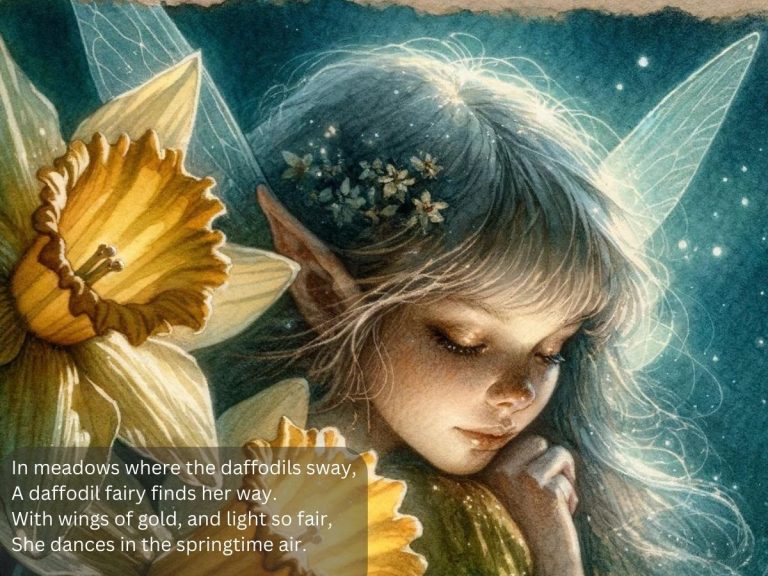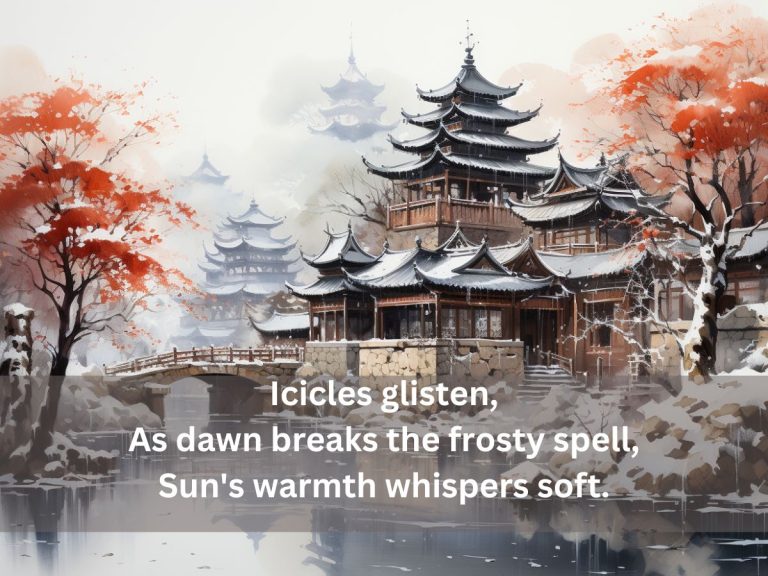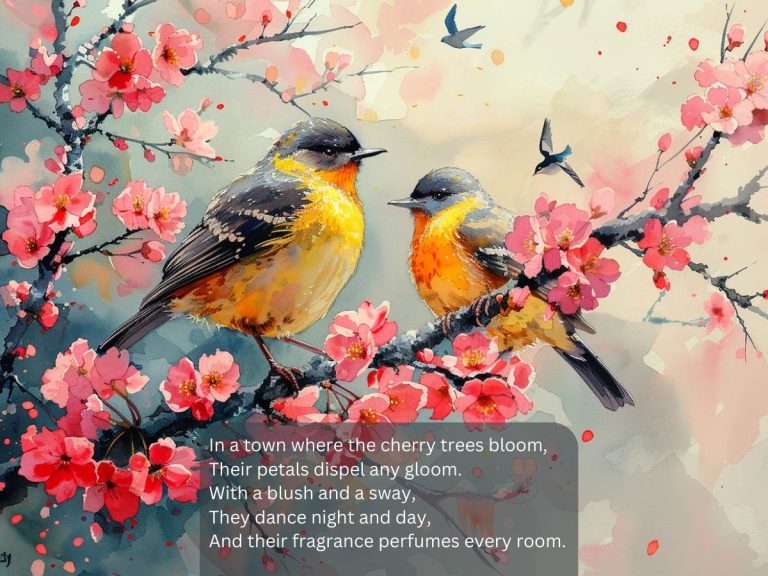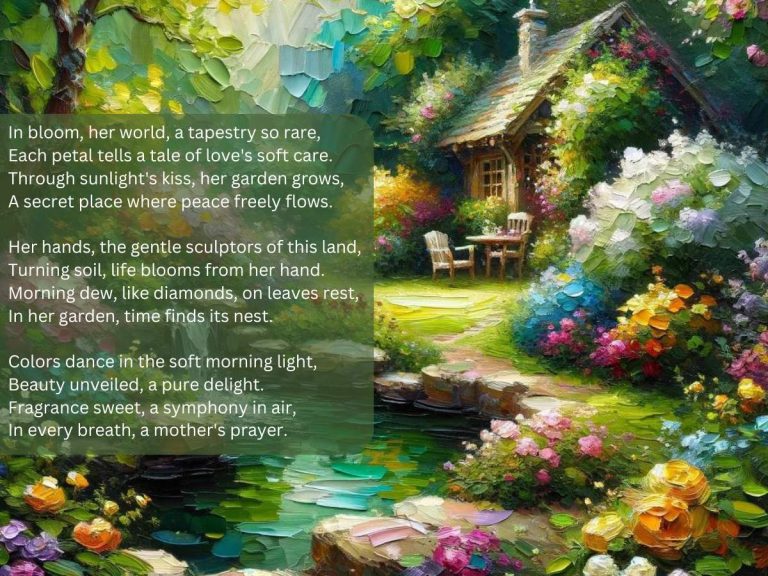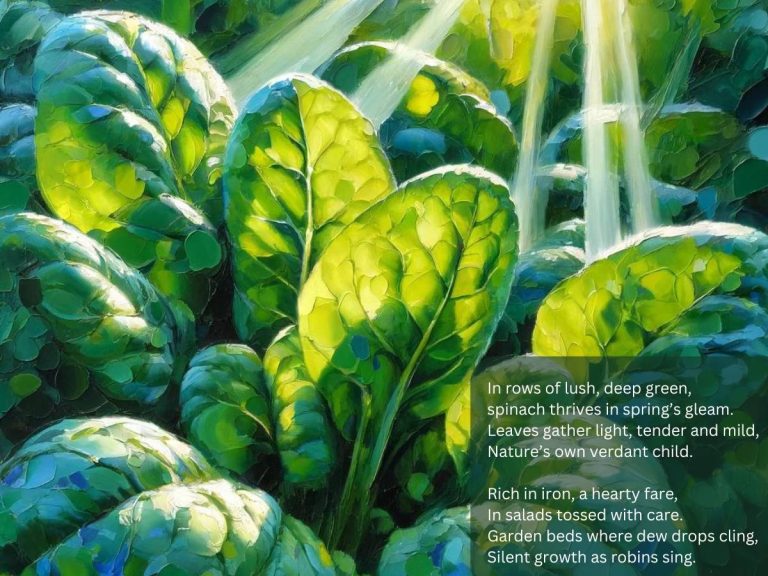Snow Haiku Poems
Table of Contents
Whispering White
Gentle snowflakes fall,
Whispering through the night's veil,
Moon's silent applause.

Summary
“Whispering White” captures the serene beauty of a snow-laden night. The imagery of gentle snowflakes falling quietly under the moonlight evokes a sense of peacefulness and the natural world’s quiet majesty.
Inspirations Behind
As I composed “Whispering White,” I envisioned a tranquil winter night. The soft descent of snowflakes, each unique and delicate, seemed like nature’s quiet conversation. The moon, a silent observer, applauds this magical moment. The haiku format, with its inherent simplicity and focus, felt perfect for conveying this moment’s fleeting, yet profound beauty.
Frozen Echo
Icy pond lies still,
Trees cast shadows on the snow,
Nature's frozen echo.
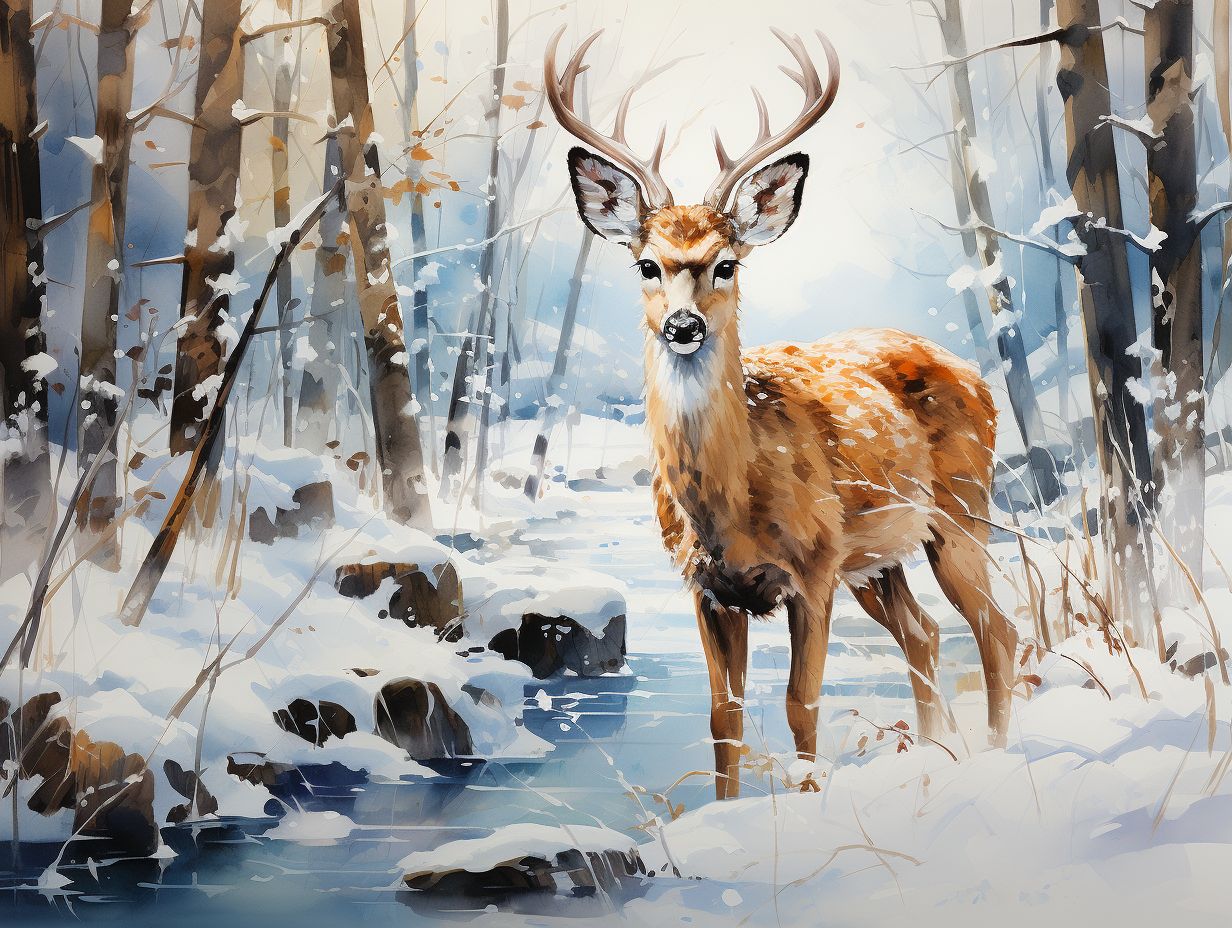
Summary
“Frozen Echo” reflects on the stillness of a frozen landscape. The imagery of an icy pond and tree shadows on the snow portrays nature in a state of quiet, almost reflective hibernation.
Inspirations Behind
When writing “Frozen Echo,” I was inspired by a winter walk beside a frozen pond. The stillness of the water and the stark shadows of bare trees on the crisp snow seemed like an echo of life, paused and preserved. The haiku’s brevity mirrors the frozen moment, capturing a snapshot of nature’s quiet pause.
Winter’s Breath
Winter's breath so cold,
Kisses the dawn with frost,
A crystal world unfolds.
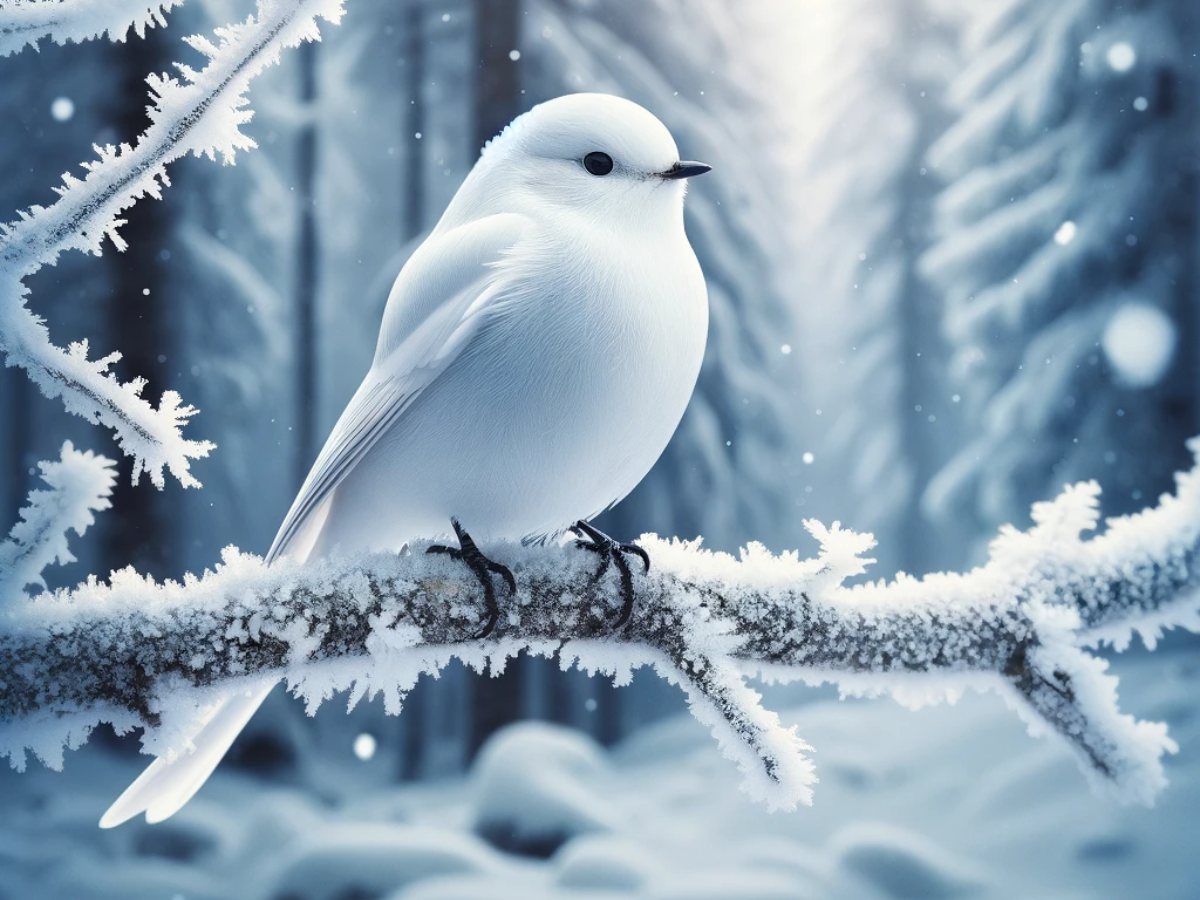
Summary
“Winter’s Breath” brings to life the moment when the cold breath of winter transforms the world into a crystal wonderland at dawn. It speaks to the transformative power of winter’s chill.
Inspirations Behind
While penning “Winter’s Breath,” I imagined the first light of dawn revealing a landscape transformed by frost. The cold breath of winter, like a tender kiss, changes everything it touches, creating a world of sparkling beauty. This haiku aims to capture that magical transformation, emphasizing nature’s delicate artistry.
Silent Sentinel
Snow-covered pine stands,
A silent sentinel,
Guarding winter's realm.

Summary
“Silent Sentinel” portrays a lone pine tree, covered in snow, standing watch over the winter landscape. It evokes a sense of steadfastness and resilience amid the cold, quiet world.
Inspirations Behind
“Silent Sentinel” was inspired by the sight of a single pine tree, laden with snow, standing resiliently through the winter. It struck me as a guardian of the season’s stillness and beauty. This haiku is my attempt to capture the tree’s quiet strength and the solemn beauty of its snowy vigil.
Snow’s Silent Secret
Snow's silent secret,
Whispers under moonlit skies,
Winter's hush descends.

Summary
This haiku, “Snow’s Silent Secret,” captures the quiet and enigmatic nature of snowfall during the night. It conveys a serene and almost mystical sensation of snow under the moonlight, bringing a feeling of calmness and wonder.
Inspirations Behind
In creating “Snow’s Silent Secret,” I envisioned a night transformed by a silent snowfall. The tranquility of the snow under the moonlit sky felt like a covert exchange between nature and the cosmos. The 5-7-5 structure of the haiku perfectly encapsulated this moment of peaceful contemplation, offering a glimpse into the silent yet profound dialogue of winter.
End Words
Each haiku adheres to this structure, aiming to capture the essence of snowy moments or a snowy scene in a brief but vivid manner.
The snow haiku poems I have penned here follow the traditional 5-7-5 syllable structure. This means each haiku consists of three lines, with the first line containing 5 syllables, the second line 7 syllables, and the third line 5 syllables again. This structure is a common characteristic of traditional Japanese haiku, and it’s often used to create a concise yet evocative image or emotion.
For each of the haikus I wrote:
- “Whispering White”: 5-7-5 syllables
- “Frozen Echo”: 5-7-5 syllables
- “Winter’s Breath”: 5-7-5 syllables
- “Silent Sentinel”: 5-7-5 syllables
- “Snow’s Silent Secret”: 5-7-5 syllables

